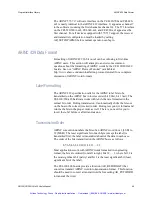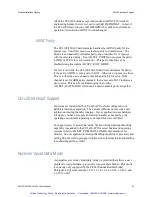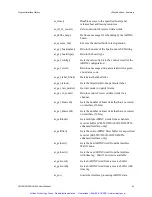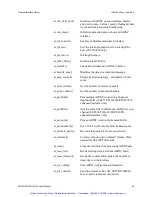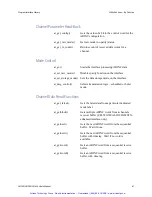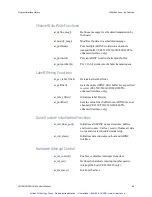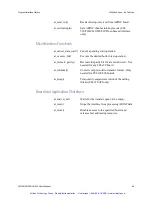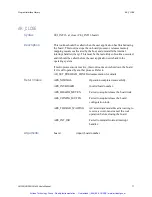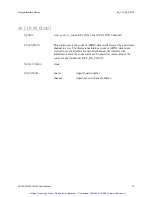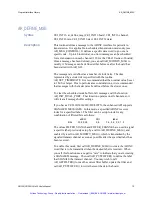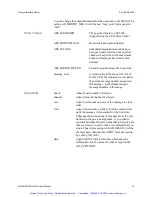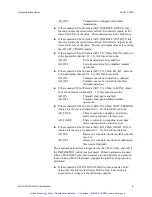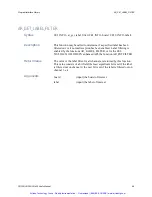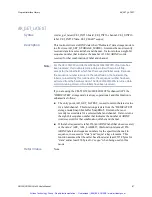
Program Interface Library
AR_DEFINE_MSG
CEI-100/CEI-200/CEI-
x20 User’s Manual
73
AR_DEFINE_MSG
CEI_INT16 ar_define_msg (CEI_INT16 board, CEI_INT16 channel,
CEI_INT16 rate, CEI_UINT16 start, CEI_INT32 data)
This routine defines a message to the ARINC interface for periodic re-
transmission. It is applicable to scheduled transmission mode only (see
AR_MSG_CONTROL). It defines a specific data word to go out at a
specific rate. Up to 48 individual, one-word messages can be scheduled
for re-transmission on each channel (120 for the CEI-x20 series of boards).
Once a message has been defined, you can call AR_MODIFY_MSG to
modify it. Messages can be defined either before or after the board has
been started with AR_GO.
The message rate is defined as a number of clock ticks. The time
represented by a clock tick is specified with the routine
AR_SET_TIMERRATE. It is recommended that the nominal value be set
to 1 MS or larger. Due to performance considerations, it is recommended
that messages with the faster rates be defined before the slower ones.
To clear the scheduled mode buffer of all messages, call the function
AR_INIT_DUAL_PORT. That function operates on all channels, so it
will clear all message buffer settings.
If you have a CEI-520/520A/620/820/820TX, the enhanced API supports
SIGNALED MESSAGES. In this mode, a specified ARINC receiver
looks for a specified label. The filter can be setup to look for any
combination of filtered bits as follows:
eSSM
SDI
label
Bits:
30, 29, 28
9, 8
7, 6, 5, 4, 3, 2, 1, 0
The values FILTER_SIGNAL and FILTER_CHANNEL are used to signal
a specific label previously setup by a call to AR_DEFINE_MSG(), and
enabled by a call to AR_MODIFY_MSG(), which is transmitted by the
signaled transmit channel as soon as possible after the specified label has
been received.
To enable this mode, first call AR_DEFINE_MSG() to create the ARINC
word that is to be transmitted when the desired label is received. When
you call this function use a negative “rate” to indicate that you are creating
a SIGNALED message. Then call AR_PUTFILTER() to define the label
that SIGNALS the transmit channel. You may wish to call
AR_GETFILTER() to read the current filter buffer, update the filter and
call AR_PUTFILTER () to write the result back to the board.
Syntax
Description
Artisan Technology Group - Quality Instrumentation ... Guaranteed | (888) 88-SOURCE | www.artisantg.com


